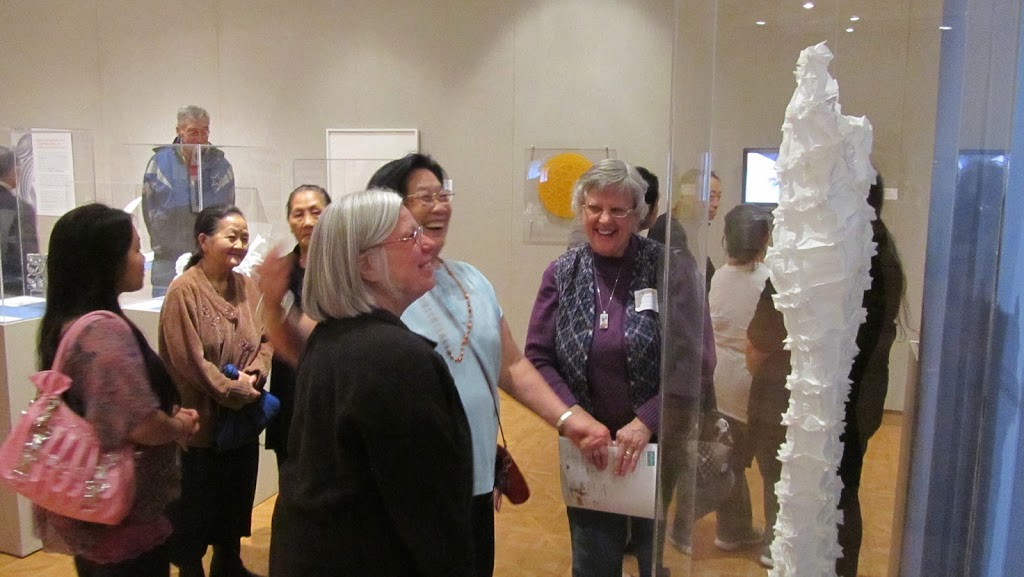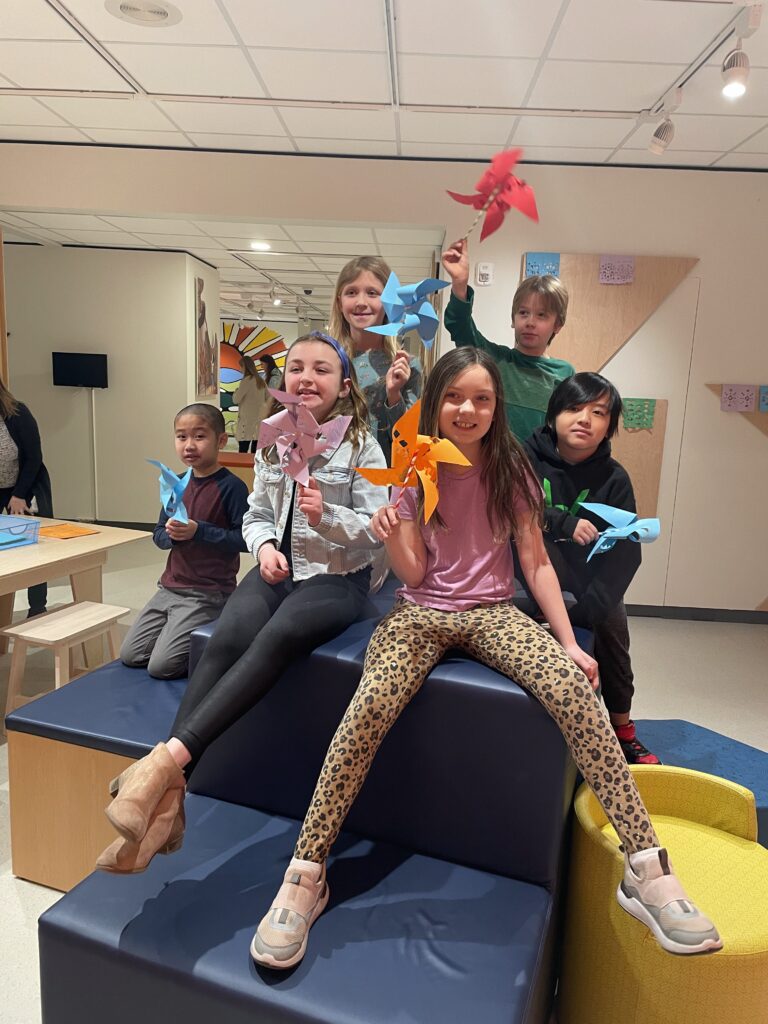
The Woodson Art Museum hosted a daylong accessibility training for community members, Museum volunteers, and colleagues on Friday, February 22. Museum educators from the Museum of Wisconsin Art and the Milwaukee Public Museum joined other speakers in presenting how their institutions offer diverse programs for visitors of all ages and abilities. Panel discussions and presentations focused on audiences with specific needs and programs that serve them such as SPARK! for individuals with memory loss and Art Beyond Sight for those with low vision or blindess. Peter Berg of the Great Lakes ADA Center at the University of Illinois at Chicago offered an informative keynote address, which covered the requirements and logistics stemming from the Americans with Disabilities Act. Berg is an outstanding representative for the Great Lakes ADA Center and also a champion for the blind community. Berg’s PowerPoint visuals served his audience well, while he relied on “Job Access with Speech” or “JAWS” a screen-reading program for the blind. It was enlightening to observe this technology in use and to see how Berg, upon hearing a five-second or so sound byte of his slide title, was able to articulate his points.
When I began assisting educator Jayna Hintz with the Woodson Art Museum’s Art Beyond Sight program last year, I was nervous. Working with individuals with vision loss and blindness in an art museum concerned me – how was I going to communicate effectively? What should I or shouldn’t I say? Could I use the words “see” or “look?”
Leading public programs usually prompts an adrenaline rush that comes from being “on” for visitors, but Art Beyond Sight had me anxious. Accessibility for all visitors is a goal at museums across the country but at the Woodson, it’s a priority. After training from Jayna about how best to serve this audience – serving as a sighted guide, offering verbal descriptions of artworks, and etiquettes for various interactions such as assisting an individual in finding a seat in the galleries – I was prepared to greet participants and join them on their in-gallery sensory experience . . . .
I loved it.
Over a year later I find myself looking forward to Art Beyond Sight on periodic Saturday mornings at the Museum, before we open our doors to the general public. What I’ve found through this program is a consistent group of thoughtful, generous, and enthusiastic art lovers who make the journey to the Woodson Art Museum during each exhibition for art making and appreciation. In the ten minutes before the program begins, the Museum’s main entrance fills with “It’s so great to see you” and “What are we going to look at today?”
Saturday, March 9, artist in residence Calvin Nicholls will join Jayna and me for an Art Beyond Sight program in the galleries amid Folding Paper and Paper Sculpture by Design. Nicholls will provide materials and a hands-on exercise in paper sculpting for participants, inviting them to enter his world of highly detailed paper sculptures. Like me, before my first Art Beyond Sight program, Calvin is filled with questions and earnest concerns – the last thing anyone ever wants to do is say or do something inappropriate. His passion for his work and hours of preparation for his residency assure me that he’ll be a wonderful addition to the March 9 Art Beyond Sight program.
Museum accessibility means more than wheelchair ramps and push buttons to open doors – although these amenities are important. It challenges educators to think about multiple points of access and making meaningful connections with individuals from all backgrounds and abilities.
Efforts to be an accessible and welcoming place for all visitors come in a variety of forms. Tuesday afternoon, I worked with Hmong adults who are students in an ESL program at the Neighbors’ Place in Wausau. I provided a guided gallery tour for two Hmong interpreters several weeks ago so that they could guide their group of English-language students through the galleries this week. The students’ time in the galleries was followed by forty minutes of origami folding in the Museum’s classroom. Through hand gestures, broken English, and lots of giggles we were all able to create origami penguins and fish – a wonderful way to spend an afternoon.




